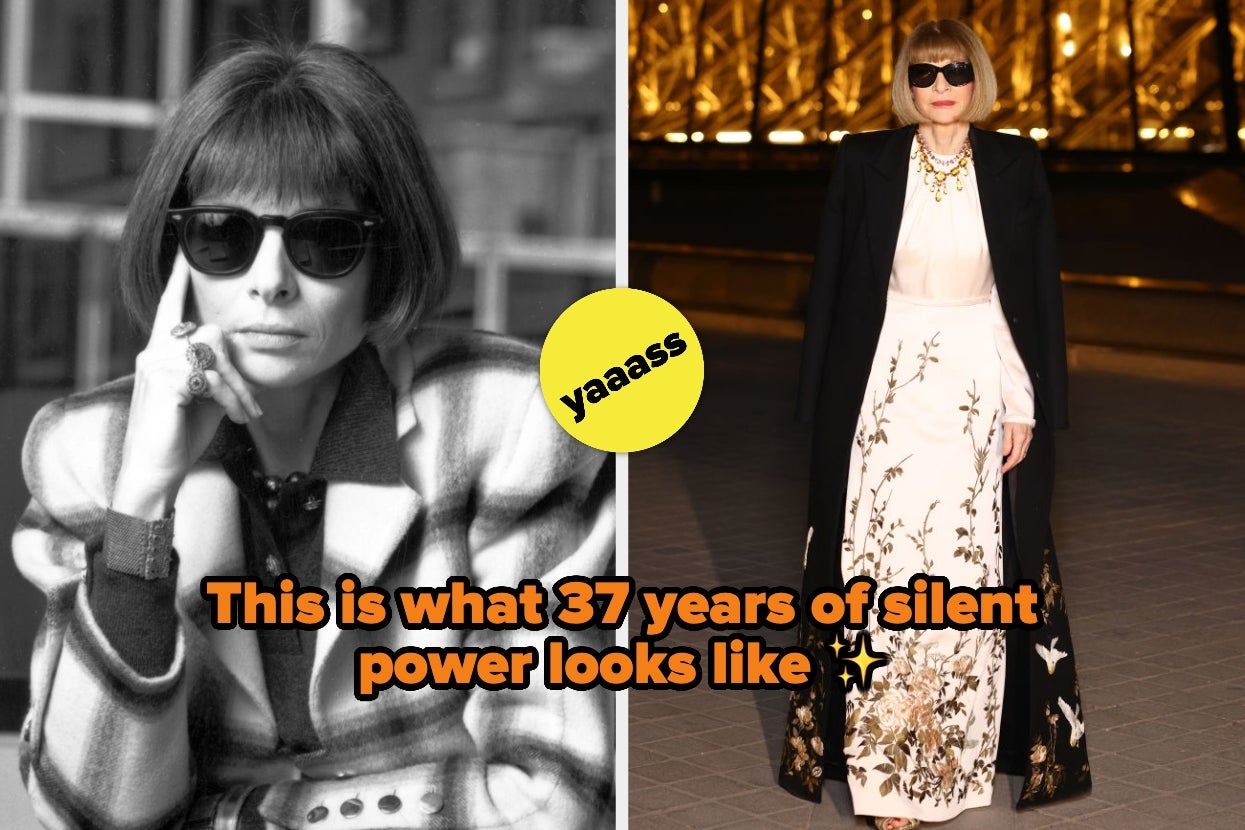
Anna Wintour ran Vogue for 37 years. That’s longer than most people have kept a phone number. Or a therapist. Or, let’s be honest, a commitment of any kind. She shaped global fashion, redefined the front row, and made the Met Gala what it is today.
But her legacy isn’t just about influence; it’s also about control. She’s been called powerful, brilliant, impossible to read… and also elitist, exclusionary, and out of touch. Under her reign, Vogue set impossible standards for who gets to be seen as “stylish” and who doesn’t.
Still, whether you admired her, feared her, or both, Anna Wintour wasn’t just part of the fashion system. For nearly four decades, she was the system. But now that she’s stepping down, I want to talk about the bob. And the sunglasses. And the floral dresses. And the coats so sharp they could cut through awkward small talk.
Because while everything in fashion changed—designers, trends, silhouettes, even the industry itself—Anna’s look didn’t. Not once. Not even a little.
She wore the same uniform with military precision for decades. Not to fit in. Not to follow trends. But to become something bigger than a person. She became a human logo. And somehow, that made her even scarier (and cooler). Let’s break it down.
1.
The bob that could withhold eye contact and approvals.
2.
Sunglasses everywhere, because feelings are optional.
Translation: she wasn’t hiding her eyes; she was hiding her reactions. That’s next-level emotional control. She turned a pair of Chanel shades into a power move.
Sure, there have been a few rare sightings of her without them—like, literal minutes where we caught a glimpse of her bare-eyed. But even at those same events, she’d usually pop back up with the sunglasses back on, like she remembered she had a legacy to protect.
Honestly? I kind of want to try it next time I’m at an event I hate.
3.
Florals for Spring? Groundbreaking. Florals forever? Unstoppable.
4.
Coats built for silent judgment.
5.
The Sit. You know the one.
There are a lot of powerful people in fashion. But none of them are instantly recognizable from the back of a blurry runway photo like Anna is. She is more of a silhouette that means: “Fashion’s about to begin.” You can dress up as her for Halloween and everyone will get it.
She doesn’t just have a look, she’s built a whole myth around it. And the wild part? While everyone else is busy reinventing themselves every season, Anna’s out here saying, “Nah, I’m good,” and still running the entire industry. She doesn’t blink. She doesn’t switch it up. She doubles down.
And that’s kind of the thing; she was the establishment. The rulebook. The velvet rope. While her influence shaped fashion globally, it also reinforced the same gatekeeping that kept it feeling closed off to anyone who didn’t fit a very narrow idea of beauty.
Sure, part of that comes with running a legacy title like Vogue, and even Condé Nast in the later years, for as long as she did. But it’s also fair to ask: how many fresh voices, diverse stories, or everyday bodies were kept out while that legendary bob held court in the front row?
Between 2000 and 2005, Vogue put 81 models on its covers, and only three of them were Black, according to a study by The Pudding. Now that’s not a great look.
In 2020, a New York Times report on Condé Nast revealed the frustration of former Black employees, many of whom said they faced “ignorance and lazy stereotyping” from white editors whenever Black culture was on the table.
And the criticism hasn’t stopped at Vogue US. In 2022, British Vogue ran a cover featuring nine models from Africa, and still got dragged. All the models had Western-style hair, and their skin appeared digitally darkened. Many saw it not as a celebration of Black beauty, but as a filtered, flattened version of it, designed for the gaze of a very white, very global fashion industry.
She’s officially announced her retirement now. But the image she’s created? That’s going to outlive us all. The bob? Still undefeated. The sunglasses? Probably still on.
But now that she’s stepped down, there’s a bigger question hanging in the air: does fashion need another Anna? Someone just as precise, just as powerful? Or is this the moment Vogue finally rethinks who gets to sit in that editorial seat and what the next era should actually look like?